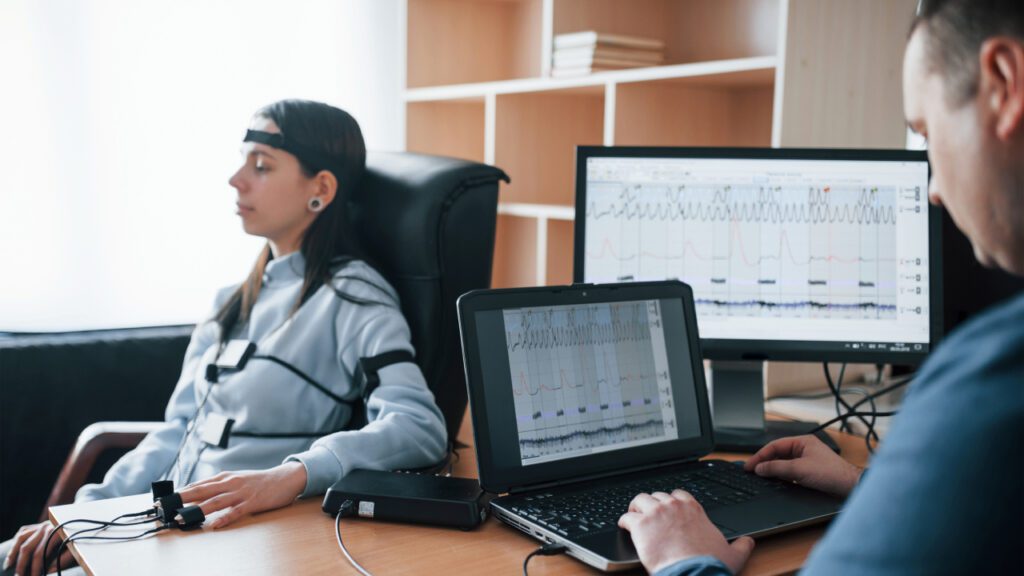Understanding Ergonomic Assessments
What are Ergonomic Assessments?
Ergonomic assessments are evaluations conducted to ensure that the workplace environment is designed to fit the needs of the employees. These assessments focus on identifying potential risks and making adjustments to prevent discomfort and injury. By analyzing the interaction between workers and their workstations, we can recommend changes that enhance comfort and efficiency.
During an ergonomic assessment, various factors are considered, including the design of the desk, chair, computer setup, and overall workspace layout. The goal is to create a work environment that supports the natural movements and postures of the body, reducing the risk of musculoskeletal disorders and other health issues.
Importance of Ergonomic Assessments in the Workplace
The importance of ergonomic assessments for office workers cannot be overstated. These evaluations play a crucial role in promoting health, safety, and productivity in the workplace. Here are some key reasons why ergonomic assessments are essential:
- Preventing Musculoskeletal Disorders (MSDs): Poor ergonomics can lead to MSDs, which are injuries affecting muscles, nerves, and tendons. By identifying and addressing ergonomic risks, we can prevent these disorders and reduce the incidence of work-related injuries.
- Improving Comfort and Productivity: A well-designed workspace enhances employee comfort, which in turn boosts productivity. When workers are comfortable, they are more likely to focus on their tasks and perform at their best. For more insights on how workplace wellness programs improve productivity, visit our article on how workplace wellness programs improve employee productivity.
- Reducing Absenteeism and Healthcare Costs: Ergonomic assessments help in creating a safer work environment, which can lead to fewer injuries and less absenteeism. This not only benefits the employees but also reduces healthcare costs for employers. Learn more about how occupational health services can reduce healthcare costs in our article on how occupational health services reduce healthcare costs for employer.
- Enhancing Employee Well-being: Ergonomics is not just about physical health; it also impacts mental well-being. A comfortable and supportive work environment can reduce stress and prevent burnout. For more information on preventing employee burnout, check out our article on preventing employee burnout through health initiatives.
By understanding the importance of ergonomic assessments, we can create a healthier and more productive workplace for everyone. For additional information on creating a safer workplace, visit our article on creating a safer workplace through early health screenings.
Benefits for Office Workers
Preventing Musculoskeletal Disorders
Ergonomic assessments play a crucial role in preventing musculoskeletal disorders (MSDs) among office workers. MSDs are injuries or disorders affecting the muscles, nerves, tendons, joints, cartilage, or spinal discs. These conditions are often caused by repetitive strain, poor posture, and prolonged periods of sitting.
By conducting ergonomic assessments, we can identify risk factors in the workplace and implement solutions to mitigate them. This proactive approach helps in reducing the incidence of MSDs, which are common among office workers. For instance, adjusting the height of a chair or the position of a computer monitor can significantly decrease the strain on the neck and back.
| Common MSDs in Office Workers | Symptoms |
|---|---|
| Carpal Tunnel Syndrome | Numbness, tingling, and weakness in the hand |
| Tendinitis | Pain and tenderness in the tendons |
| Lower Back Pain | Persistent pain in the lower back |
| Neck Strain | Stiffness and pain in the neck |
Understanding the importance of ergonomic assessments for office workers can lead to a healthier and more productive workforce. For more information on creating a safer workplace, visit our article on creating a safer workplace through early health screenings.
Improving Comfort and Productivity
Ergonomic assessments not only prevent injuries but also enhance overall comfort and productivity. When office workers are comfortable, they are more likely to be engaged and efficient in their tasks. Proper ergonomic setups can reduce fatigue and discomfort, allowing employees to focus better on their work.
Adjustments such as providing ergonomic chairs, ensuring proper desk height, and optimizing lighting conditions can make a significant difference. These changes contribute to a more pleasant working environment, which in turn boosts morale and productivity.
| Ergonomic Adjustment | Benefit |
|---|---|
| Ergonomic Chair | Reduces back pain and supports proper posture |
| Adjustable Desk | Allows for alternating between sitting and standing |
| Monitor Placement | Prevents neck strain and eye fatigue |
| Proper Lighting | Reduces eye strain and headaches |
Investing in ergonomic assessments is a smart move for any organization. It leads to happier, healthier employees who are more productive and less likely to take sick leave. To learn more about how workplace wellness programs can improve productivity, check out our article on how workplace wellness programs improve employee productivity.
By prioritizing ergonomic assessments, we can create a safer and more efficient workplace for everyone.
The Process of Ergonomic Assessments
Ergonomic assessments are essential for ensuring the health and safety of office workers. The process involves a thorough evaluation of the workplace and the implementation of recommendations to improve ergonomics.
Initial Evaluation
The initial evaluation is the first step in the ergonomic assessment process. During this phase, we conduct a comprehensive analysis of the work environment to identify potential ergonomic risks. This includes examining the layout of the workspace, the design of furniture and equipment, and the tasks performed by employees.
Key aspects of the initial evaluation include:
- Workspace Layout: Assessing the arrangement of desks, chairs, and equipment to ensure they are positioned correctly.
- Furniture and Equipment: Evaluating the design and adjustability of office furniture and equipment.
- Employee Tasks: Observing the tasks performed by employees to identify any repetitive motions or awkward postures.
| Evaluation Aspect | Description |
|---|---|
| Workspace Layout | Arrangement of desks, chairs, and equipment |
| Furniture and Equipment | Design and adjustability of office furniture |
| Employee Tasks | Observation of repetitive motions and postures |
Recommendations and Implementations
Following the initial evaluation, we provide detailed recommendations to address any identified ergonomic risks. These recommendations are tailored to the specific needs of the workplace and may include adjustments to furniture, equipment, and work practices.
Key recommendations may include:
- Proper Desk Setup: Ensuring desks are at the correct height and that monitors are positioned at eye level.
- Correct Posture: Training employees on maintaining proper posture while sitting and working.
- Ergonomic Equipment: Introducing ergonomic chairs, keyboards, and other equipment to reduce strain.
Once the recommendations are made, the implementation phase begins. This involves making the necessary adjustments and providing training to employees on how to use the new ergonomic solutions effectively. Regular follow-ups and evaluations are conducted to ensure the changes are having a positive impact on employee health and productivity.
For more information on creating a safer and healthier workplace, visit our articles on how workplace wellness programs improve employee productivity and understanding osha compliance and occupational health exams.
Ergonomic Solutions
Implementing ergonomic solutions in the workplace is essential for enhancing the well-being and productivity of office workers. Proper desk setup and correct posture and movement are key components of an effective ergonomic strategy.
Proper Desk Setup
A well-organized desk setup can significantly reduce the risk of musculoskeletal disorders and improve overall comfort. Here are some essential elements to consider:
- Desk Height: The desk should be at a height where the worker’s elbows are at a 90-degree angle when typing.
- Monitor Position: The top of the monitor should be at or slightly below eye level, about an arm’s length away.
- Chair Adjustments: The chair should support the lower back and allow the feet to rest flat on the floor or on a footrest.
| Component | Ideal Position/Adjustment |
|---|---|
| Desk Height | Elbows at 90-degree angle |
| Monitor Position | Top of monitor at eye level, arm’s length away |
| Chair Adjustments | Lower back support, feet flat on floor |
For more detailed guidance on setting up an ergonomic workstation, refer to our article on creating a safer workplace through early health screenings.
Correct Posture and Movement
Maintaining correct posture and incorporating regular movement into the workday are crucial for preventing discomfort and injury. Here are some tips:
- Sitting Posture: Sit with the back straight and shoulders relaxed. Keep the feet flat on the floor and avoid crossing legs.
- Standing Posture: When standing, distribute weight evenly on both feet. Avoid locking the knees.
- Movement: Take short breaks to stand, stretch, and walk around every 30 minutes.
| Activity | Recommended Practice |
|---|---|
| Sitting Posture | Back straight, shoulders relaxed, feet flat |
| Standing Posture | Weight evenly distributed, knees relaxed |
| Movement | Short breaks every 30 minutes |
Incorporating these practices can help mitigate the negative effects of prolonged sitting and improve overall health. For more information on promoting a healthy work environment, check out our article on preventing employee burnout through health initiatives.
By focusing on proper desk setup and correct posture and movement, we can create a more comfortable and productive workspace for office workers. Understanding the importance of ergonomic assessments for office workers is crucial in achieving this goal.
Training and Education
Employee Training on Ergonomics
Employee training on ergonomics is essential for fostering a healthy and productive work environment. We believe that educating employees about proper ergonomic practices can significantly reduce the risk of musculoskeletal disorders and enhance overall comfort. Training sessions should cover various aspects of ergonomics, including correct posture, appropriate desk setup, and effective movement techniques.
| Training Topic | Description |
|---|---|
| Correct Posture | Teaching employees how to maintain a neutral spine position while sitting and standing. |
| Desk Setup | Guidelines on arranging monitors, keyboards, and chairs to minimize strain. |
| Movement Techniques | Encouraging regular breaks and exercises to prevent stiffness and discomfort. |
By providing comprehensive training, we empower employees to take proactive steps in maintaining their health and well-being. For more information on how workplace wellness programs improve employee productivity, visit our article on how workplace wellness programs improve employee productivity.
Promoting a Culture of Health and Safety
Promoting a culture of health and safety within the workplace is crucial for long-term success. We advocate for creating an environment where employees feel supported and encouraged to prioritize their health. This involves integrating ergonomic principles into daily routines and fostering open communication about health and safety concerns.
| Initiative | Description |
|---|---|
| Regular Health Screenings | Implementing early health screenings to identify potential issues before they escalate. |
| Safety Workshops | Conducting workshops to educate employees on best practices for maintaining a safe work environment. |
| Mental Health Support | Providing resources and support for mental health to enhance overall workplace performance. |
By promoting a culture of health and safety, we can reduce the incidence of workplace injuries and improve employee morale. For more insights on creating a safer workplace through early health screenings, visit our article on creating a safer workplace through early health screenings.
Investing in employee training and fostering a culture of health and safety are integral components of effective ergonomic assessments. These efforts not only enhance the well-being of office workers but also contribute to a more productive and harmonious workplace.










